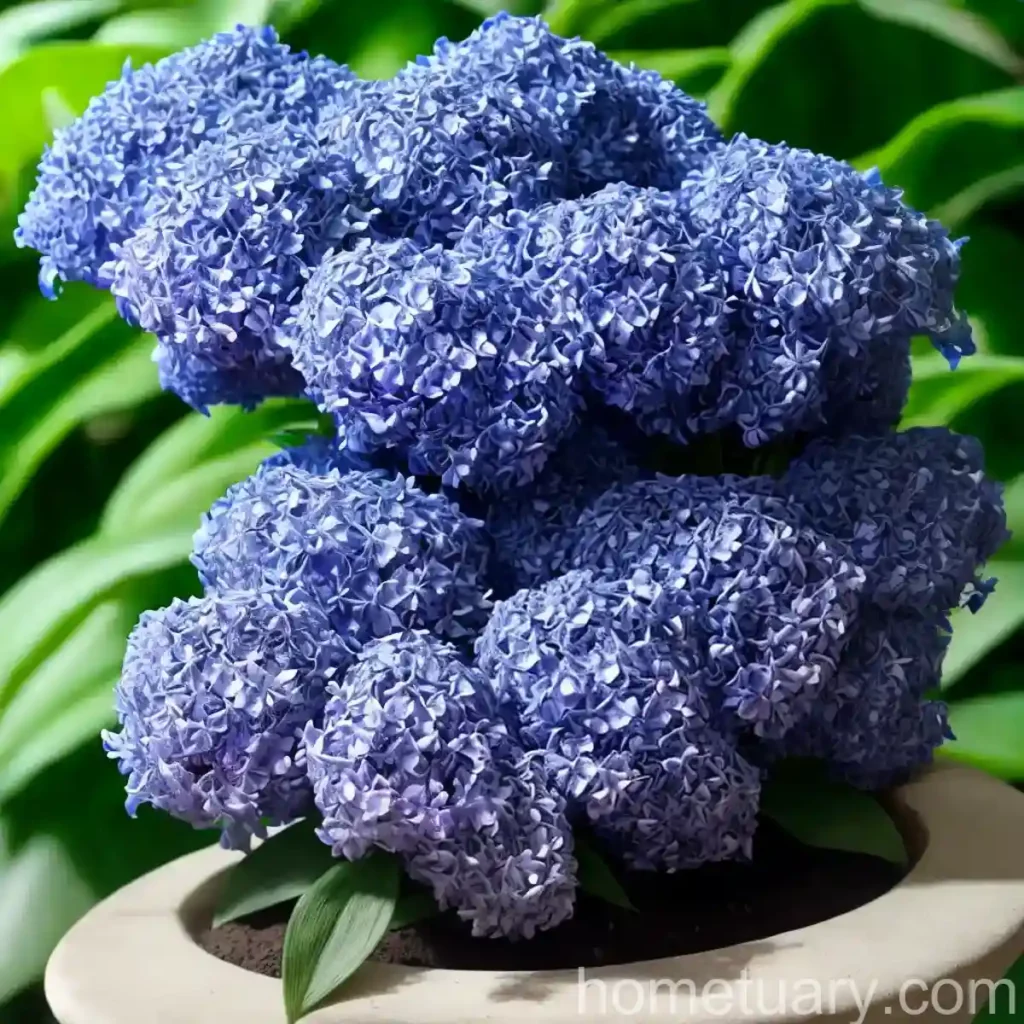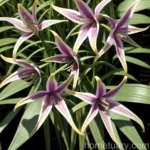Blue Ginger (Dichorisandra thyrsiflora)
Blue ginger, also known as Dichorisandra thyrsiflora, is a stunning tropical plant that has gained popularity among gardeners for its vibrant blue flowers and lush foliage. This plant, despite its common name, is not related to true ginger (Zingiber officinale) and belongs to the Commelinaceae family. It is native to the rainforests of Brazil and is favored for its ornamental value and easy-to-care nature.
In this extensive guide, we will delve into the various aspects of blue ginger, including its cultural requirements, uses, propagation techniques, common diseases, and much more. Whether you are an indoor gardening enthusiast, an outdoor landscape designer, or simply someone who adores the beauty of plants, this comprehensive blog post will equip you with the knowledge needed to cultivate and appreciate Dichorisandra thyrsiflora to its fullest potential.
Key Takeaways
Before diving into the specifics of blue ginger care, propagation, and potential uses, let’s begin by summarizing the key takeaways pertaining to this remarkable plant.
- Plant Name: Blue Ginger (Dichorisandra thyrsiflora)
- Family: Commelinaceae
- Native Habitat: Brazilian rainforests
- Common Uses: Ornamental purposes, landscaping, indoor and outdoor gardening
- Notable Characteristics: Vibrant blue flowers, lush foliage, low maintenance
- Cultural Requirements: Adequate water, filtered sunlight, well-draining soil
- Propagation Methods: Division, stem cuttings
- Potential Pests: Aphids, mealybugs
- Potential Diseases: Leaf spot, root rot
- Fun Fact: Despite its common name, blue ginger is not botanically related to true ginger.
With these key takeaways in mind, let’s explore the specifics of caring for and utilizing blue ginger to enhance your botanical endeavors.
Culture
Cultivating blue ginger successfully involves understanding and meeting its specific cultural requirements. From water and sunlight needs to soil composition and appropriate fertilizer application, providing the right environment is crucial for the plant’s growth and overall health.
Water
Proper watering is essential for the well-being of blue ginger. While it appreciates consistently moist soil, it is crucial to avoid waterlogging, which can lead to root rot. The frequency of watering will largely depend on the environmental conditions and the moisture retention capacity of the soil.
- Water Requirements: Maintain consistently moist soil, allowing the top inch of the soil to dry before watering again.
- Signs of Overwatering: Yellowing leaves, wilting, and waterlogged soil
- Signs of Underwatering: Drooping leaves, dry soil
Sunlight
Blue ginger thrives in environments with filtered sunlight. In its native habitat, it is typically found growing beneath the canopy of larger trees, receiving dappled light throughout the day. When cultivated in gardens or as a houseplant, mimicking these light conditions is essential for its optimal growth and flowering.
- Sunlight Needs: Partial shade to filtered light; avoid direct exposure to intense midday sun.
- Ideal Locations: Shaded garden beds, under tall trees, or in brightly lit indoor spaces with indirect sunlight.
Fertilizer
Applying a balanced fertilizer can support the growth and blooming of blue ginger. However, it is important to avoid over-fertilization, which can lead to excessive foliage at the expense of flower production.
- Fertilizer Type: Water-soluble, balanced fertilizer (such as 10-10-10) or organic alternatives
- Fertilizing Schedule: Apply a diluted fertilizer every 4-6 weeks during the growing season (spring to early fall).
- Avoidance: Refrain from fertilizing during the dormant winter period.
Soil
The right soil composition is crucial for blue ginger to thrive. It requires well-draining, rich, and slightly acidic soil to support its growth and prevent waterlogged conditions.
- Ideal Soil Type: Rich, loamy soil with good drainage
- pH Level: Slightly acidic soil (pH 6.0-6.5)
- Amendments: Incorporate organic matter (compost, peat moss) to improve soil structure and fertility.
Pruning
Pruning blue ginger primarily involves removing dead or damaged foliage and spent flower spikes. This practice helps maintain the plant’s aesthetic appeal and overall health.
- Pruning Tools: Clean, sharp pruning shears or scissors
- Pruning Frequency: Regularly inspect the plant for yellowing or damaged leaves and remove them as needed.
- Flower Spikes: Trim faded flower spikes at their base to encourage continuous blooming and prevent seed formation.
Propagation
Propagation of blue ginger can be achieved through division and stem cuttings. These methods allow for the creation of new plants from established ones, enabling gardeners to expand their blue ginger collection or share the beauty of this plant with others.
- Division: Divide mature clumps of blue ginger during the spring to separate and replant individual sections with healthy rhizomes and roots.
- Stem Cuttings: Take stem cuttings from healthy, actively growing stems and root them in a suitable growing medium to establish new plants.
Container Popularity
Due to its striking appearance and relatively compact growth habit, blue ginger is a popular choice for container gardening. Whether grown indoors or on patios and balconies, it adds a touch of tropical charm to any space.
- Container Size: Choose a container that allows for adequate root development and stability. A pot with a diameter of 10-14 inches is suitable for a single blue ginger plant.
- Drainage: Ensure that the container has drainage holes to prevent waterlogging.
- Potting Mix: Use a well-draining, nutrient-rich potting mix tailored for tropical plants.
Container Common Diseases
Plants cultivated in containers may be susceptible to specific diseases related to their growing environment. While blue ginger is generally resilient, keeping an eye out for potential issues is key to maintaining its health.
- Root Rot: Overly moist or poorly draining potting mix can lead to root rot in container-grown blue ginger. Ensure proper drainage and avoid overwatering to mitigate this risk.
Disease Diagnosis
Identifying and addressing potential diseases promptly is crucial for preventing their spread and minimizing their impact on blue ginger plants.
- Symptoms of Common Diseases:
- Leaf Spot: Circular brown or black spots on leaves, often accompanied by yellowing or wilting.
- Root Rot: Soft, mushy roots, yellowing foliage, wilting, and stunted growth.
Common Pests
While blue ginger is relatively resistant to pest infestations, occasional invasions by common garden pests may occur. Vigilance and proactive measures can help address these issues effectively.
- Potential Pests:
- Aphids: Small, soft-bodied insects that cluster on new growth, causing leaf distortion and honeydew secretion.
- Mealybugs: Cottony, white insects that congregate on stems and leaf undersides, sapping plant juices.
Botanist’s Tips
Every seasoned botanist has valuable insights and tips for cultivating and appreciating plants to their fullest potential. Here are some expert recommendations for blue ginger care and cultivation.
- Tip 1: Mulching: Apply a layer of organic mulch around blue ginger plants to conserve soil moisture and suppress weed growth.
- Tip 2: Temperature Considerations: Protect blue ginger from cold drafts and temperatures below 50°F (10°C), as it thrives in warm, tropical conditions.
- Tip 3: Companionship: Pair blue ginger with other shade-loving tropical plants, such as ferns and Calathea species, to create a lush and visually appealing garden bed or container display.
Fun Facts
Uncovering intriguing and delightful facts about plants adds another layer of appreciation for their beauty and diversity. Here are some captivating facts about blue ginger that highlight its unique qualities.
- Not a True Ginger: Despite its common name, Dichorisandra thyrsiflora is not botanically related to true ginger (Zingiber officinale) or the Zingiberaceae family.
- Vibrant Blue Flowers: Its mesmerizing blue flowers make it a standout species in tropical and subtropical landscapes, earning it the nickname “blue ginger.”
- Wildlife Attraction: The nectar-rich flowers of blue ginger attract various pollinators, including butterflies and hummingbirds, adding ecological value to the garden.
Links to External Resources
For further information on blue ginger care, propagation, and potential uses, consider exploring the following external resources:
- Royal Horticultural Society – Blue Ginger Planting Guide
- University of Florida IFAS Extension – Blue Ginger Culture and Use
- Missouri Botanical Garden – Dichorisandra thyrsiflora Profile
- Plant Care Today – Growing Blue Ginger Indoors
By delving into these resources, you can deepen your understanding of blue ginger and glean further insights from experts and horticultural organizations.
In conclusion, blue ginger, with its captivating flowers and tropical allure, offers a compelling addition to gardens, indoor spaces, and landscaping projects. By adhering to its cultural requirements, applying expert tips, and promptly addressing potential issues, you can successfully cultivate and celebrate the beauty of Dichorisandra thyrsiflora in your botanical pursuits.
Whether you are drawn to its ornamental value, its potential as a container plant, or its ecological significance as a wildlife attractant, blue ginger stands as a remarkable plant worthy of admiration and careful cultivation. Incorporating it into your botanical endeavors can enrich your gardening experiences and contribute to the diversity and beauty of your natural surroundings.















